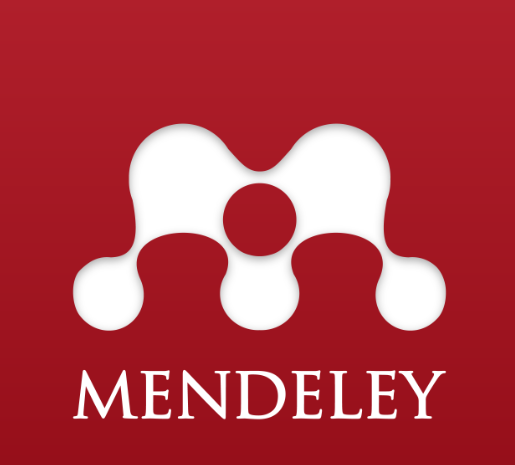ANALYSIS OF COMPANY CAPABILITY USING 7S MCKINSEY FRAMEWORK TO SUPPORT CORPORATE SUCCESSION (CASE STUDY: PT X INDONESIA)
ANALISA KAPABILITAS PERUSAHAAN DENGAN MENGGUNAKAN FRAMEWORK 7S MCKINSEY UNTUK MENDUKUNG KESUKSESAN PERUSAHAAN (STUDI KASUS: PT X INDONESIA)
DOI:
https://doi.org/10.22219/mb.v11i1.17371Keywords:
Capability, Human Resource, Retirement, 7S McKinsey, Mixed Method Research ModelAbstract
PT X Indonesia is a telecommunications company with a geographically focused division which operating in the province of West Java. PT. X Indonesia is currently undergoing a digital transformation to achieve its goal of "becoming a leader in the digital region". However, this transition has accompanied with a large number of employees retiring between 2020 and 2021. This has resulted in increased workloads and a lack of competency. Therefore, PT X Indonesia will analyze its current capabilities, future capabilities, and existing gaps to meet future demand. This analysis uses a mixed method research model, where the current capabilities of PT X Indonesia are analyzed using a survey method. In addition, the researcher interviewed key informants at PT X Indonesia to find out the capabilities needed in the future. The 7s McKinsey's framework (1980) was used to analyze this research. This framework identifies seven dimensions that a company must possess to maintain its success. This 7s dimension consists of Strategy, System, Structure, Style, Skill, Staff, and Superordinate Goals. According to a survey conducted to assess the current capabilities of PT X Indonesia, there are three dimensions that are in the bottom three. Thus, to bridge the gap, there are several recommendations that must be immediately carried out by PT X Indonesia, namely strengthening the team work, recruiting new employees to fill vacancies, socializing the talent acquisition system, conducting coaching sessions from seniors, and conducting knowledge sharing.
Downloads
References
Ahluwalia, L., & Puji, K. (2020). Pengaruh Kepemimpinan Pemberdayaan Pada Kinerja dan Keseimbangan Pekerjaan Rumah di Masa Pandemi NCOVID-19. PUBLIK: Jurnal Manajemen Sumber Daya Manusia, Administrasi Publik dan Pelayanan Publik, 1-12.
Carpenter, M. A., & Sanders, W. G. (2007). Strategic Management: A dynamic perspective concept and cases. Pearson Education.
Chada, S. (n.d.). Ericsson. Retrieved Januari 12, 2021, from Ericsson Web site: https://www.ericsson.com/en/blog
Cresswell, J. W. (2013). Research Design Qualitative, Quantitative, and Mixed Methods Approaches, Third Edition. California: Sage Publications.
Dettmer, H. W. (2007). The Logical Thinking Process: A System Approach to Complex Problem Solving (2nd ed.). Wisconsin: America Society for Quality.
Fitzroy, P., & Hulbert, J. M. (2012). Strategic Management the challange of creating value. New York: Routledge.
Gaol, J. L. (2014). Human Capital: Manajemen Sumber Daya Manusia. Jakarta: PT Gramedia Widiasarana Indonesia.
Ghozali, I. (2013). Aplikasi Analisis Multivariate dengan Program IBM SPSS 21. Semarang: Badan Penerbit Universitas Dipenogoro.
Grant, R. M., & Jordan, J. (2011). Foundations of Strategy. John Willey & Sons Ltd.
Henry, A. E. (2011). Understanding Strategic Management. New York: Oxford University Press.
Hitt, M. A., Ireland, R. D., & Hoskisson, R. E. (2015). Strategic Management: Competitiveness & Globalization: Concepts. Ohio South Western: Cengage Learning.
Holbeche, L. (2014). Aligning Human Resources and Business Strategy. New York: Routledge.
Hutapea, P. (2008). Kompetensi Plus: Teori, Desain, Kasus dan Penerapan untuk HR dan organisasi yang dinamis. Jakarta: Gramedia.
Kucharþíkováa, A. (2014). Human Capital Management - Aspect of the Human Capital Eficiency in University Education. Procedia, 13.
Mitchell, B., & Gamlem, C. (2012). The Big Book HR. The Career Press.
Newman, I., & Pineda, F. (2013). Content Validity Using a Mixed Methods Approach: Its Application and Development Through the use of Table of Spesifications Methodology. Journal of Mixed Methods Research.
Noe, R. A. (2005). Employee Training and Development 3rd edition. New York: Mc Graw Grill.
Noe, R. A., Gerhart, B., & Hollenbeck, J. R. (2010). Human Resource Management: Gaining a Competitive Advantage. Boston: Mcgraw Grill.
Palmer, I., Dunford, R., & Buchanan, A. (2017). Managing Organizational Change 3rd edition. New York: McGraw-Hill Education.
Porter, M. A. (1996). What is Strategy. Harvard Business Review .
Study.com. (n.d.). Retrieved January 26, 2020, from Study.com Web site: https://study.com/academy/lesson/external-recruitment-advantages-disadvantages-methods.html
Sugiyono. (2010). Metode Penelitian Pendidika Pendekatan Kuantitati, Kualitatif dan R&D. Bandung: Alfabeta.
Thompson, A. A., Strickland, A. J., & Gamble, J. (2010). Crafting and Executing Strategy: The quest for competitive advantage: concept and cases. New York: McGraw-Hill.
Downloads
Published
Issue
Section
License
Copyright (c) 2021 Manajemen Bisnis

This work is licensed under a Creative Commons Attribution 4.0 International License.
Authors who publish with this journal agree to the following terms:
- Authors retain copyright and grant the journal right of first publication with the work simultaneously licensed under a Creative Commons Attribution-ShareAlike 4.0 International License that allows others to share the work with an acknowledgment of the work's authorship and initial publication in this journal.
- Authors are able to enter into separate, additional contractual arrangements for the non-exclusive distribution of the journal's published version of the work (e.g., post it to an institutional repository or publish it in a book), with an acknowledgment of its initial publication in this journal.
- Authors are permitted and encouraged to post their work online (e.g., in institutional repositories or on their website) prior to and during the submission process, as it can lead to productive exchanges, as well as earlier and greater citation of published work (See The Effect of Open Access).

This work is licensed under a Creative Commons Attribution-ShareAlike 4.0 International License.




71.png)





